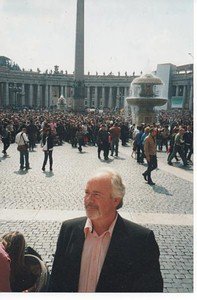Utopias and meaning: the two flags of Latin American Independence. 1808-1824
The exhibition on the Bicentennial anniversary of the Latin American Independence wants to propose a more complete scenario that goes beyond both the official view of the facts, and the common belief that the Latin American Independence was a fruit of the French Revolution. The official view insisted on the aspect of modernity of America, characterized from the beginning by the pursuit of independence. The cliché regarding the Latin American Independence emphatically states that such independence would take place under the pressure of the ideals of “liberty, equality, and fraternity.”
The exhibition will try to look at the phenomenon of independence starting from the attempt of people who — moved by the desire of their heart –- longed for something new capable to change the world, even though they collided with the limit and the disproportion that reality imposed on them. The exhibition will start describing the constitution of a new Latin American subject after the Discovery (at the end of the 15th century) and will end with questions regarding the current situation, with an emphasis on the process that led to the Latin American Independence.
The first section describes the great cultural and political unity of the Kingdoms of the Indies, which started with the Discovery of America (1492) and dramatically took shape starting from that event. After three centuries, a great crisis hit the Spanish Monarchy following Napoleon’s invasion (1808) into the Iberian Peninsula; because of this circumstance various Latin American movements seeking independence were born. The independence wasn’t born in America, but rather it was a consequence of that crisis. What moved people apparently so different, such as Agustín de Iturbide, José San Martín, or Simón Bolívar? The whole 19th century witnessed the dramatic change from the ancient concept of “Indian nation” to the concept of “modern nation.”
How could such traditional peoples as the Spanish and the American ones suddenly establish such modern political regimes? Or moreover, why didn’t the process for independence lead to a total separation from Spain, but rather was prolonged through the painful internal separation of the former provinces that formed the vice reigns? And again, why did this historical fact bring to the establishment of a Caudillism that made any attempt at unity impossible, and instead paved the way to a crisis that is still real today? This history and these questions form the second section.
The people that were seeking a change in society through the revolution had to fight within these tensions. Today, when celebrating the Bicentennial anniversary, which should be the right attitude that can support us in keeping desiring what our Founding Fathers desired? Which kind of politics truly serve that desire? “Give up the laws and, then, what distinguishes the state from a bunch of bandits?” (St. Augustine). Who supports the education of man’s desire in history? The third and last section of the exhibition will try to answer to these questions.
By Anibal Fornari, Luis Ferrero, Julián De la Morena, Dolores Ruiz de Galarreta, María Itatí Cabral, Lucía Ferrero, Alver Metalli, Graciela Tayara.






